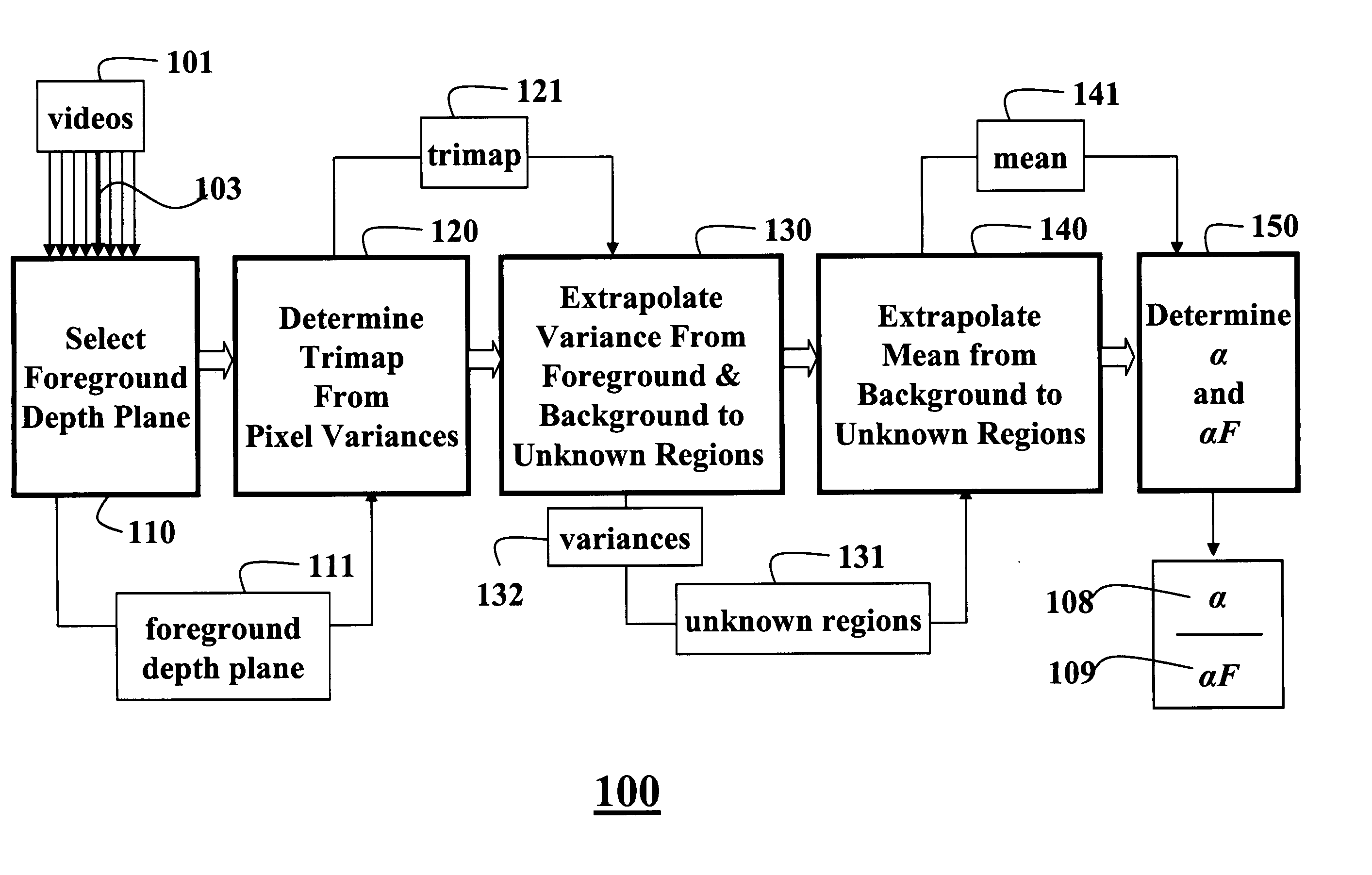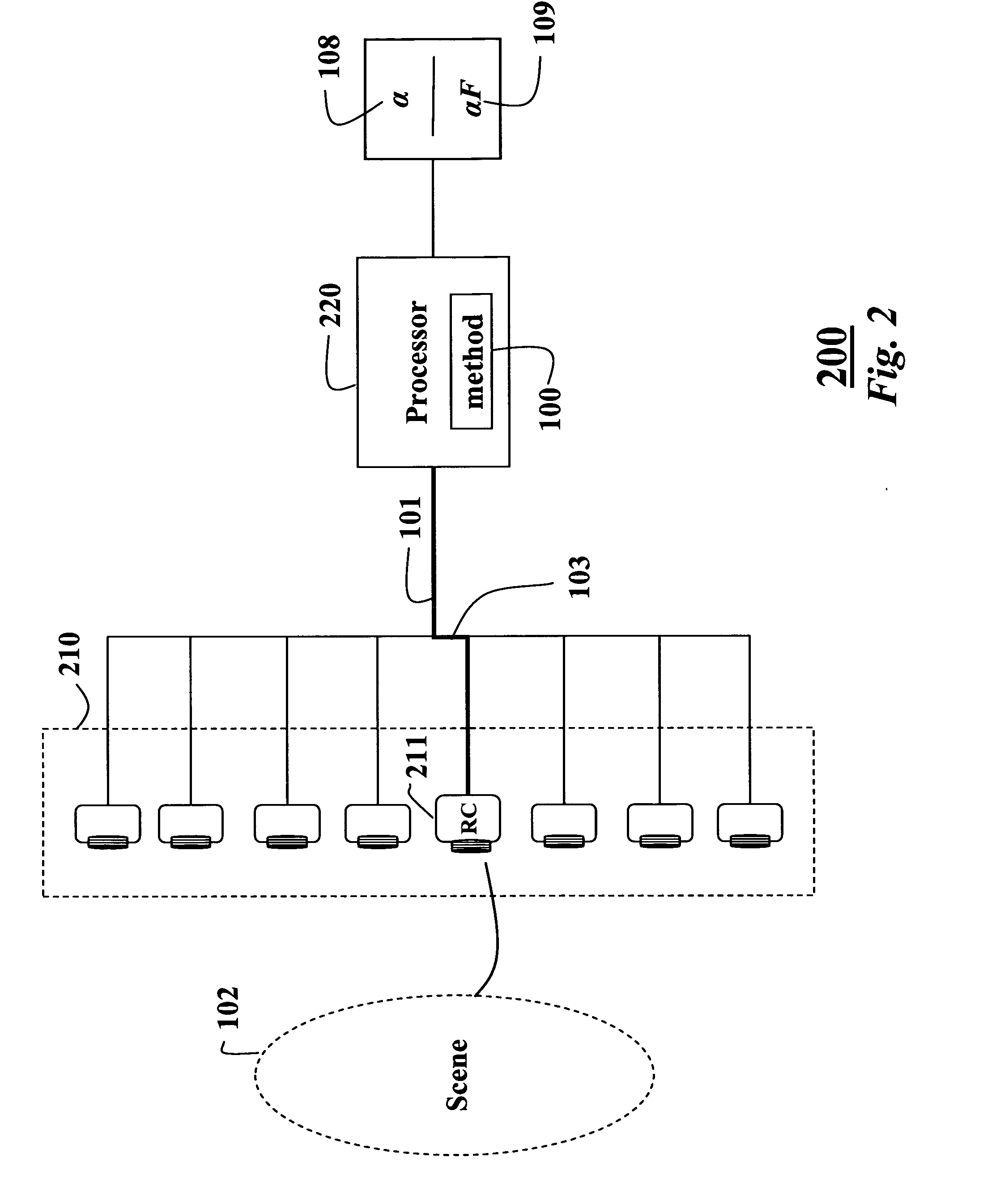Video matting using camera arrays
- Summary
- Abstract
- Description
- Claims
- Application Information
AI Technical Summary
Benefits of technology
Problems solved by technology
Method used
Image
Examples
Embodiment Construction
[0020]FIG. 1 shows a method 100 according to an embodiment of our invention. FIG. 2 shows a system 200 according to an embodiment of the invention. The method 100 and system 200 determine an alpha matte (α) 108 and an alpha multiplied foreground (αF) 109. The method 100 operates according to instructions executed in a processor 220.
[0021] Input to the method and system are a set of videos 101 of a scene 102 acquired by an array of cameras 210, e.g., eight cameras. One substantially centrally located camera is designated a reference camera (RC) 211. The alpha matte is determined for a reference video 103 acquired by the reference camera 211.
[0022] After selecting 110 a foreground depth plane 111, the method determines 120 a trimap 121. Generally, the trimap includes pixels labeled as foreground, pixels labeled as background, and pixels labeled as unknown. Matting requires that the unknown pixels are labeled correctly. A correctly labeled trimap then becomes an alpha matte 108.
[002...
PUM
 Login to View More
Login to View More Abstract
Description
Claims
Application Information
 Login to View More
Login to View More - R&D
- Intellectual Property
- Life Sciences
- Materials
- Tech Scout
- Unparalleled Data Quality
- Higher Quality Content
- 60% Fewer Hallucinations
Browse by: Latest US Patents, China's latest patents, Technical Efficacy Thesaurus, Application Domain, Technology Topic, Popular Technical Reports.
© 2025 PatSnap. All rights reserved.Legal|Privacy policy|Modern Slavery Act Transparency Statement|Sitemap|About US| Contact US: help@patsnap.com



